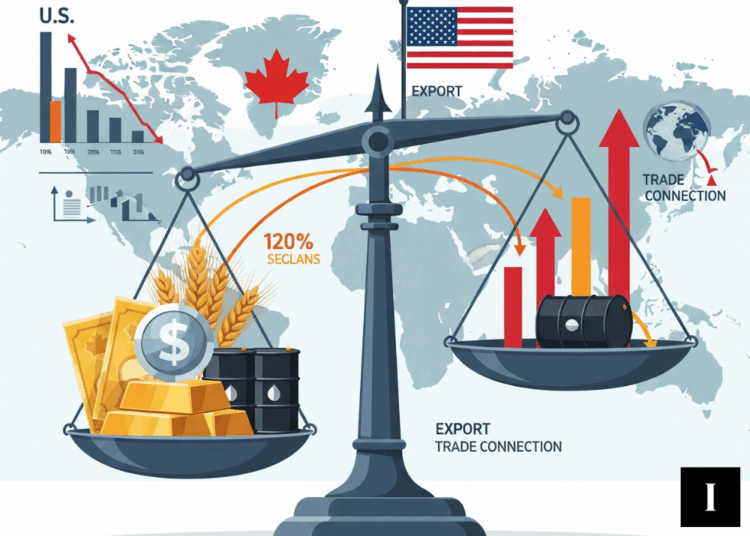Canada Trade Deficit Narrows Amid Export Diversification Push
Canada’s trade deficit showed signs of recovery in May 2025, narrowing to C$5.9 billion ($4.34 billion) from a downwardly revised C$7.6 billion in April, according to data released by Statistics Canada. The shift comes after a record-breaking deficit the previous month and signals a modest rebound in exports driven largely by markets outside of the United States.
While total exports increased by 1.1% in May—marking the first rise in four months—imports dropped by 1.6% to C$66.66 billion. Despite continued weakness in exports to the U.S., shipments to other global markets reached new highs, highlighting a pivotal moment in Canada’s trade diversification efforts.
Canada Trade Deficit: U.S. Exports Fall, Global Demand Rises
One of the most notable developments was the growing strength of exports to countries other than the U.S., which rose 5.7% in May to reach a record high. This shift partially offset a 0.9% monthly decline in exports to the U.S.—Canada’s largest trading partner. Exports to the U.S. have now fallen for four consecutive months, a trend last seen outside the pandemic year of 2020.
“This data tells a story of diversification,” said Prince Owusu, Senior Economist at Export Development Canada. “While our U.S. trade continues to decline, we’re increasingly looking to other markets for growth.”
In volume terms, total exports were up by 0.7%, driven significantly by the surge in unwrought gold exports, particularly to the United Kingdom. Exports of unwrought gold alone rose by 30.1% to hit a record $5.9 billion, leading a 15.1% increase in the metals and minerals export category.
However, when excluding metal and non-metallic mineral products, overall exports actually declined by 1.2%, reflecting ongoing weaknesses in sectors impacted by trade tensions.
Tariffs and Tensions: U.S.-Canada Trade Struggles Continue
Trade relations between Canada and the United States remain strained. U.S. tariffs—introduced under former President Donald Trump—include a 25% duty on Canadian-made automobiles and 50% on steel and aluminum. Canada has responded with retaliatory tariffs, but the tit-for-tat measures have contributed to declining trade volumes and impacted employment across sectors.
As a result, Canada’s trade surplus with the U.S. continues to shrink, while its deficit with the rest of the world has narrowed. The share of Canadian trade involving the U.S. dropped to one of its lowest levels outside of 2020.
Both nations are now aiming to stabilize relations, with Prime Minister Mark Carney and former President Trump seeking to reach a trade agreement by July 21. Still, the economic toll from the ongoing tariff dispute has already been felt across industries.
Outlook: Weak U.S. Demand May Weigh on Q2 GDP
Although May’s narrower trade deficit offers a measure of relief, economists caution that the two consecutive months of negative trade balances could drag down Canada’s second-quarter GDP.
The Canadian dollar responded modestly to the report, weakening by 0.23% to 1.3615 against the U.S. dollar. Meanwhile, yields on two-year government bonds rose 3.7 basis points to 2.706%.
Looking ahead, Canadian companies are likely to continue exploring new markets to counteract sluggish demand from traditional partners like the U.S. and China. Exports to China remain weak, with notable declines in canola and crude oil shipments.
Still, the May data underscores a clear shift: Canada is actively pivoting toward a more diversified trade portfolio, a strategy that could buffer the economy against future geopolitical and market shocks.
Read more global economic insights in IMPAAKT, your trusted top business magazine for market trends and strategy.












